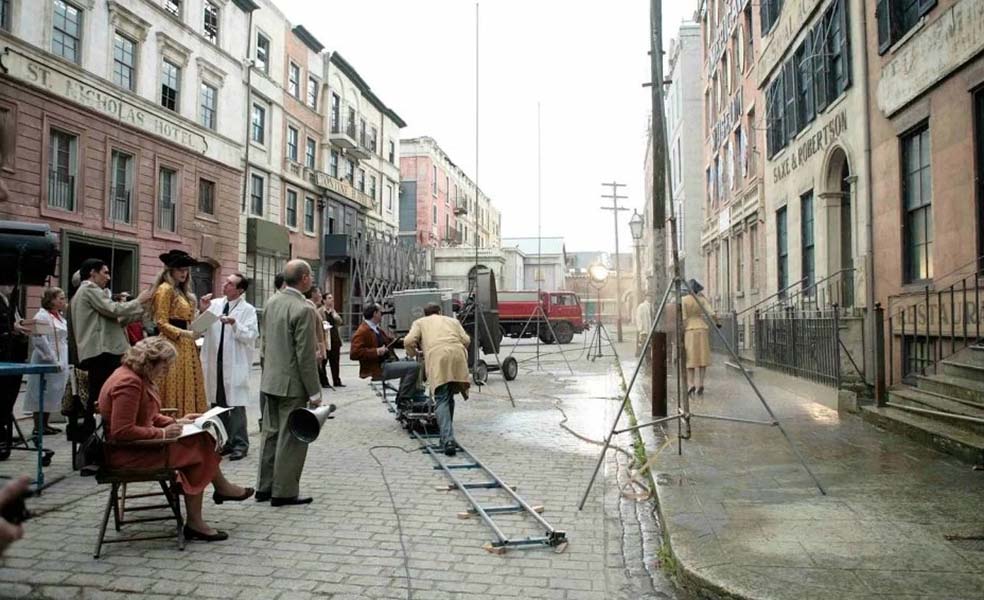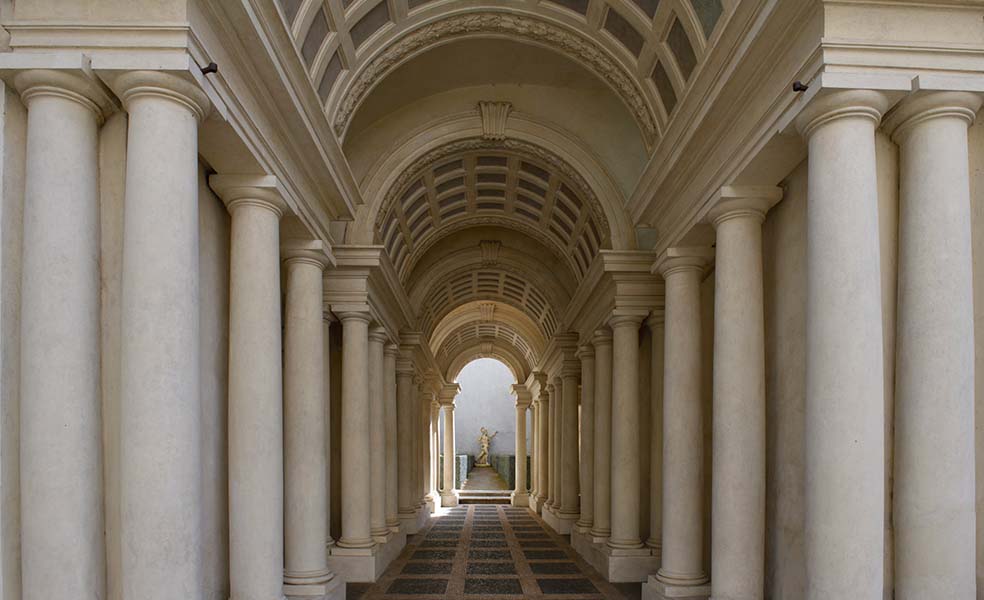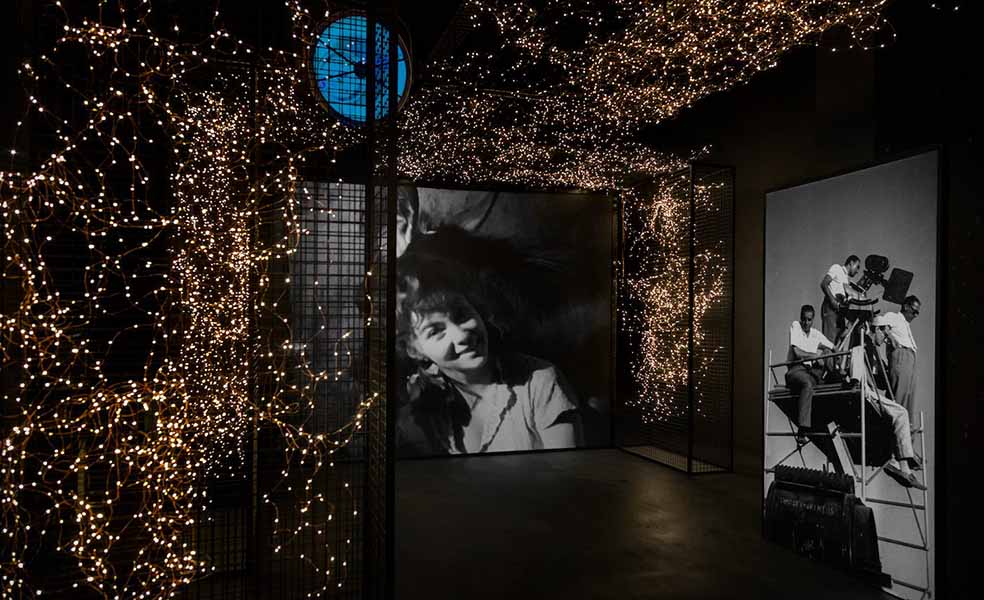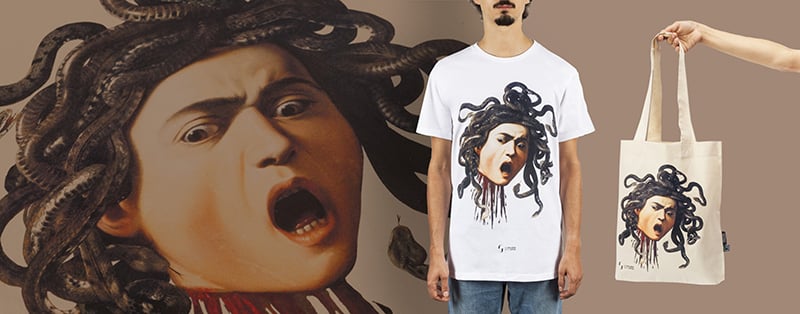Home / Museums / Galleria Colonna
Galleria Colonna
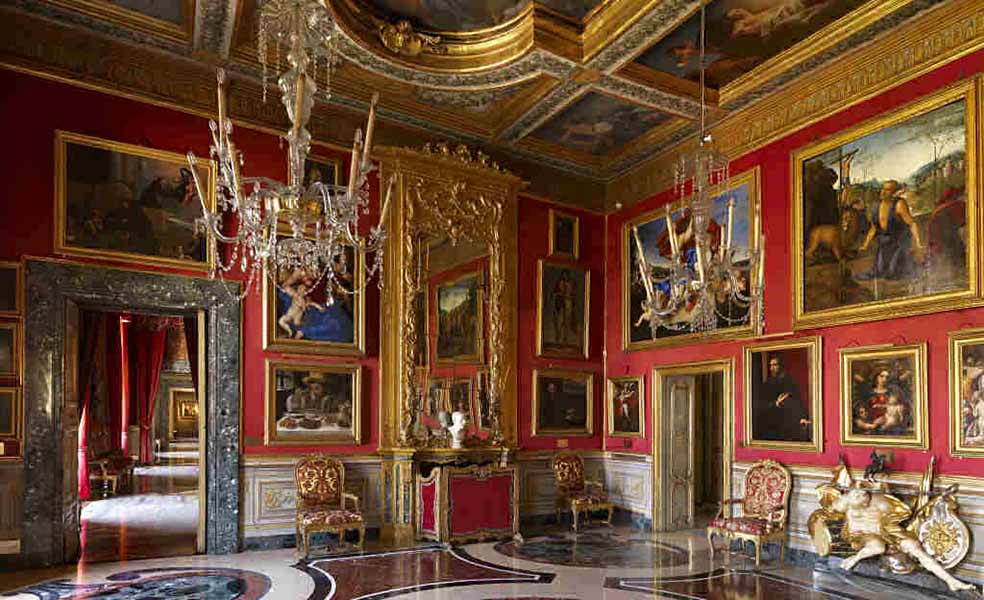
Galleria Colonna
A true jewel of Roman the Baroque, the Galleria Colonna was commissioned in the mid 1600s by Cardinal Girolamo I Colonna and his nephew Lorenzo Onofrio. It was inaugurated by Philip II, Lorenzo Onofrio’s son, in 1700. The original project was by architect Antonio del Grande, it was then integrated by Gian Lorenzo Bernini, Johan Paul Schor and Carlo Fontana in the last decade of the seventeenth century.
From the very beginning, the Gallery was conceived as a huge state room, which was to celebrate the victory at the Battle of Lepanto in 1571. The commander of the papal fleet, Marcantonio II Colonna, is depicted numerous times throughout the vault of the Great Hall of the Gallery, in the Hall of the Battle Column and in the Hall of the Landscapes.
The vault fresco in the Hall of the Battle Column is the work of Giuseppe Bartolomeo Chiari and depicts the presentation of Marcantonio to the Virgin Mary in heaven. The hall was named after the column of red marble on a pedestal located at the center of the room, which recalls the family coat of arms. The carvings represent ancient Roman military scenes. Among the many works of art to be found in this room, we would like to point out the beautiful painting by Bronzino, Venus, Cupid and a Satyr. Of particular interest are the three large paintings by Michele di Ridolfo del Ghirlandaio: The Night, above the painting by Bronzino and, on the opposite wall, Aurora with Venus and Cupid.
On the short flight of stairs leading to the Great Hall it is possible to see a cannon ball that landed right there in 1849 during the period of the Roman Republic. It was fired by the French Army from the Janiculum Hill, under the orders of General Oudinot, entered from Porta San Pancrazio to rescue Pope Pius IX from the Republican insurgents, including Mazzini, Armellini and Saffi, who occupied the center of Rome for a few months.
Decorating the vault of the Great Hall is the cycle of frescoes depicting the different moments of the Battle of Lepanto, while on the side walls it is possible to admire four impressive painted mirrors by Mario dei Fiori, Giovanni Stanchi and Carlo Maratta, along with the impressive series of masterpieces by Guercino, Salvator Rosa, Jacopo Tintoretto, Francesco Salviati, Guido Reni, Giovanni Lanfranco and many others.
Walking around freely in this beautiful space, it is possible to appreciate the paintings, sculptures and precious furnishings which represent the heart of the family art collection, bound by the fidecommesso (a trust) since 1800 as a guarantee for their preservation over time. The artworks are inalienable and indivisible, inextricably tied to the walls of the palace.
If you would like to learn more about the Colonna family, the Palace and its furnishings, please do not hesitate to consult the publications available to our visitors at the main points of the Colonna Gallery: The Blue Room, The Hall of the Battle Column, and The Hall of the Landscapes.
After leaving behind two majestic columns coated with antique yellow marble, you find yourselves in the Hall of the Landscapes, which took its name from the numerous paintings of rural subjects by Gaspard Dughet. The vault, depicting an allegory of the Battle of Lepanto, was executed in the late 1600s by Luca Giordano and Sebastiano Ricci. The large cabinet made of ebony and ivory, the work of the german Steinhart brothers, depicts scenes from the Old and New Testament and, in the center, is the Last Judgment that Michelangelo painted in the Sistine Chapel in the Vatican. On the opposite wall is a cabinet made of sandalwood and precious stones depicting a Roman villa of the time.
As you continue your visit, you enter the Room of the Apotheosis of Martin V. The room was named after the large canvas by Benedetto Luti at the center of the ceiling depicting the presentation of the family pope into heaven. This room is filled with important masterpieces: Il Mangiafagioli (The Bean Eater) by Annibale Carracci, dating from the late sixteenth century, is among the most famous ones and depicts the meal of a peasant. Three centuries later, the artwork is said to have inspired impressionist painters such as Van Gogh and Degas. Above the Mangiafagioli is a valuable panel painting by Bronzino, The Virgin with Spleeping Child, St. Anne and the young St. John the Baptist. On the upper right side of the fireplace is St. Julian the Hospitaller by Perin del Vaga and, below, the Portrait of Composer Adrian Willaert at the Spinet by Jacopo Tintoretto. On the central wall, Time ravishing Beauty by Il Cavalier D’Arpino, The Rape of Europe by Francesco Albani, the Penitent St. Jerome in the Desert by Perugino and The Holy Family with St. Sebastian, St. Jerome and Mary Magdalene by Paris Bordon. And again, the Crowned Virgin by Andrea del Sarto, the Self Portrait with Cameo and the Raising of Lazarus by Francesco Salviati.
On the seventeenth-century Roman console table, is a Carrara marble bust of Cardinal Girolamo I Colonna, commissioner of the Gallery, carried out by Orfeo Boselli in the mid 1600s. On the left of the console table is a valuable painting by Jacopo Tintoretto depicting Onofrio Panvinio, a very well known Augustinian historian of his time and on the right, Portrait of a Gentleman by Paolo Veronese.
The Throne Room is dedicated to the family Pope, Oddone Colonna who was elected on 11 November 1417, St. Martin’s day, which is the reason why he chose the name Martin V. During his pontificate, which lasted until 1431, Pope Martin V had his permanent residence at the Palazzo Colonna, which became the papal seat for about ten years. The throne facing the portrait of the pope was reserved for papal visits up until 1870, when it was common for popes to visit the palaces of the ancient families of the Roman aristocracy. On the left and on the right of the portrait of Martin V are two small portraits by Scipione Pulzone depicting Marcantonio II Colonna, the victor of Lepanto, and his wife, Felice Orsini, as well as the oldest paintings of the entire collection: Madonna with Angels by Stefano da Verona, and The Crucifixion by Jacopo Avanzi, both dating back to the fourteenth century.
In the following room, the Tapestry Room, it is exposed the large seventeenth-century Italian tapestry depicting Queen Artemisia examining the project for the tomb of her late husband Mausolus. There are also numerous paintings of exquisite workmanship, among the many, The Massacre of the Innocents by Jacopo del Sellaio, The Reconciliation of Esau and Jacob by Peter Paul Rubens and his worshop, and the Ecce Homo by Francesco Bassano the Younger.
The following Yellow Room, or entrance hall, shows wall frescoes painted by the brothers Giuseppe and Stefano Pozzi, authors of the figures, and Giovanni Angeloni, for landscapes and ornaments, and date back to the mid-fifties of the eighteenth century. They represent idealized views of villas with spectacular trompe-l’oeil effects, as the two wreaths of stucco relief connecting the walls to the ceiling.
From this room two doors give access to the Room of the Chapel where can be found a number of tapestries from the series dedicated to Queen Artemisia date back to the beginning of the seventeenth century from Parisian manufacture, Boulevard Saint- Marcel. Among the many interesting paintings, of particular interest is The Resurrection of Christ and of Some Members of the Colonna Family at the End of Time by Pietro da Cortona. In the same room you can also admire the paintings by Guercino, the Guardian Angel and Moses with the Tables of the Law. The eighteenth-century Murano chandelier is the largest in the whole palace.
The Chapel, visible from this room, houses above the altar the wooden crucifix by Giuliano da Sangallo and The Holy Family by Giuseppe Bartolomeo Chiari, and on the right, a Deposition after the school of Paolo Farinati (sixteenth century). On the left is a stained-glass window depicting the translation of the body of the Blessed Margherita Colonna from Castel San Pietro to the Roman church of San Silvestro in Capite (1283).
In the Room of the Old Masters’ Paintings it is possible to admire a superb French tapestry, same manufacture of Paris Boulevard Saint-Marcel, dated to the early 1600s, depicting the Queen Artemisia watching her son, prince Lygdamis, taking a riding lesson. The room also houses an impressive collection of paintings depicting sacred subjects from the fifteenth to the seventeenth century. Among the many, it is worth mentioning two small paintings, Madonna and Child (also known as the Madonna of the Zodiac because of the zodiac signs appearing in the background) and the Virgin Annunciate, by Cosmè Tura, one of the most famous artists in Ferrara, St. Augustine by Carlo Crivelli, Madonna and Child with Saints by Jacopo Palma il Giovane, Saint Anthony Abbot and a Bishop Saint by Pietro Alemanno, The Adoration of the Shepherds and Christ among the Doctors by Bernardino di Mariotto and the Birth of the Virgin and Two Kneeling Donors in a Landscape, by the so-called Master of the Colonna Predella.
The Room of the Embroidery takes its name from the fine Iberian “Indian-style” tapestries on the walls, dated to the mid-seventeenth century and woven with a technique that combines gold and silk threads. The central canopy shows the Colonna and Pamphilj coat of arms remembering the marriage between Philip II, son of Lorenzo Onofrio Colonna and Maria Mancini, and Olimpia Pamphilj in 1697.
Next to the Room of the Embroidery is a small vestibule with mirrors, painted in the mid-eighteenth century, leading to the Room of The Apotheosis of Martin V.
Palazzo Colonna
The construction of the various wings of Palazzo Colonna lasted for five centuries. This has led to the overlapping of different architectural styles, interiors and exteriors, which characterize and reflect the different periods.
From 1300 to 1500 it acted as a family fortress. Oddone Colonna, elected Pope on November 11, 1417 under the name of Martin V, appointed the Palace as the Pontifical Seat and lived there from 1420 to 1431, the year of his death.
In those ten years, within the austere rooms of Palazzo Colonna, Pope Martin V designed and implemented a great plan for a cultural, urban and administrative rebirth of the city of Rome, which lay in devastating conditions after the period of papal exile to Avignon and the Western Schism.
In 1527, during the sack of Rome by the troops of Emperor Charles V, Palazzo Colonna was one of the few buildings that was not destroyed due to the good relationship of the family with the Empire. Instead, it offered a safe haven for more than three thousand Roman citizens.
Throughout the 1600s, the Palace took the form of a large Baroque palace at the will of three generations; the leading family members being Philip I, Cardinal Girolamo I and Lorenzo Onofrio, who relied on architects and artists of great skill and reputation.
In fact, Gian Lorenzo Bernini, Antonio del Grande, Carlo Fontana, Paolo Schor, and many others, all lent their expertise.
Also during this time was the construction of the beautiful and majestic Galleria Colonna, which has 76 meters of length facing onto via IV Novembre. This authentic jewel of the Roman Baroque is now open to the public, with apartments of major artistic value that are most representative of the Palace. They house the Art Collections of the family, notified and bound by the fidecommesso of 1800, including masterpieces of absolute excellence painted by leading Italian and foreign artists between the XV and XVI century.
Among the artists are Pinturicchio, Cosmè Tura, Carracci, Guido Reni, Tintoretto, Salvator Rosa, Bronzino, Guercino, Veronese, Vanvitelli and many others.
Princess Isabelle Apartment
Here the Colonna Princess preserves the apartment formerly used by Princess Isabelle exactly as it was when she was still alive.
In the apartment you can find the same warm atmosphere, the same attention to detail and care to keep the family photos where they were originally placed, next to the famous collection of thirty-seven views of Vanvitelli.
This is not the only prized possession in this area, located on the ground floor of the palace which was built upon the foundations of the ancient Temple of Serapis.
One of the few traces of the Roman sanctuary is a crocodile in porphyry, which welcomes visitors at the beginning of the sequence of rooms where famous artists left their mark, such as Pinturicchio, Pomarancio and Cavalier Tempesta.
The floor of the apartment in “Venetian” style, is only partially ancient. The original floor is only visible in the hall of the fountain; in all the other rooms, the Princess replaced the traditional covering with shiny oriental marble, perhaps inspired by her Lebanese origins.
Isabelle Colonna, born Sursock, family of Byzantine origin, established in Lebanon since the 17th century, fell in love with Prince Marcantonio, who brought her to Italy, where she was able to integrate successfully into Roman society, at a time when it was up against the rise of Mussolini.
“Great lady-in-waiting, intelligent, educated, conservative in the most consistent and purest sense, after the fall of the monarchy she replaced Jose Maria as a “substitute queen”, offering regal receptions, where royalty and, among the bourgeoisie, only financiers and bankers were allowed, provided, of course, they were not divorced” (as Laura Laurenzi remembers it in the daily newspaper La Repubblica from 18 November 1984, on the occasion of her funeral).
In the last years of her life, her apartment turned into a treasure chest, which she loved to show only to her closest friends.
On the wall you can still see the canopy with the family symbol. At the center of the rooms is the gilded wood console where chained Turks remind us of the famous Battle of Lepanto in 1571, where Marcantonio Colonna stopped the threat of Muslim invasion.
One of the rarest pieces is the painted night clock, kept between two ancient chests in the Hall of the Fountain: a silent internal mechanism moves the numbers which are lit from behind by a candle.
A little further in the back, a strange double sofa, which experts call confidenza or “intimacy”, recalls the many meetings that must have gone on within these walls for more than six hundred years.
In these lounges the presence of two other famous women of the family still lingers: Maria Mancini, whose likeness is preserved in the portrait by Simon Vouet, painter at the court of Louis XIV of France, and Olimpia Pamphili, evoked by doves with an olive branch painted on the ceilings of the first rooms of the apartment.
The first, niece of the powerful Cardinal Mazzarino, wrote in her diary about the adventures of her unhappy relationship with Lorenzo Onofrio Colonna, from whom she fled. To get her back to Rome, he closed the doors of all the lounges in Europe.
A sad ending to a relationship which had begun auspiciously, as evidenced by the painted ceiling by Giacinto Gimignani, where he portrays the encounter between an ancient column and a pair of fish, the heraldic symbol of Mancini.
Yet for a while Lorenzo Onofrio and Mary must have been happy: Maratta and Dughet even portrayed them in the guise of Venus and Paris, a role they may have interpreted at the famous costume balls they loved to organize.
On the wall next to their double portrait “in costume”, Jan Brueghel the Elder left nine fantastic miniature landscapes, painted on copper to bring out the warmth of the reds and the crystal purity of the blues. Just another of the many treasures hidden in this mansion, which reveals how often you can easily live in contact with absolute masterpieces.
Every Saturday from 9 a.m. to 1.15 p.m. with entrance from Via della Pilotta, 17.
2-3 hours
Books and guides
No products were found matching your selection.
Merchandise
No products were found matching your selection.
Related museums
From €10,00
Italy’s temple of cinema since 1937, the year of its foundation, Cinecittà is both an active production and creation hub and an exhibition-museum structure that has been expanding continuously since 2011. On entering through the original Rationalist entrance on Via Tuscolana, visitors continue into the Studios’ green parkland to be greeted by scenic elements that include the Rocking Horse from Pinocchio and the mysterious head of Venusia, created for Federico Fellini’s 1976 film Casanova. The museum experience includes visits to the exhibition routes of Cinecittà Shows Off and MIAC – Italian Museum of Moving Images.
Average visit time:
2-3 hours
From €10,00
Opened at the end of 2019 in the Cinecittà Studios, inside a historic building created in the 1930s as a development and printing laboratory and film depot, the MIAC – Museo Italiano dell’Audiovisivo e del Cinema is a multimedia, interactive and immersive museum dedicated to the art of moving images, to tell its history and evolution between the 20th and 21st centuries, from the origins of cinema to the arrival of television and the new digital technologies.
Average visit time:
1-2 hours


